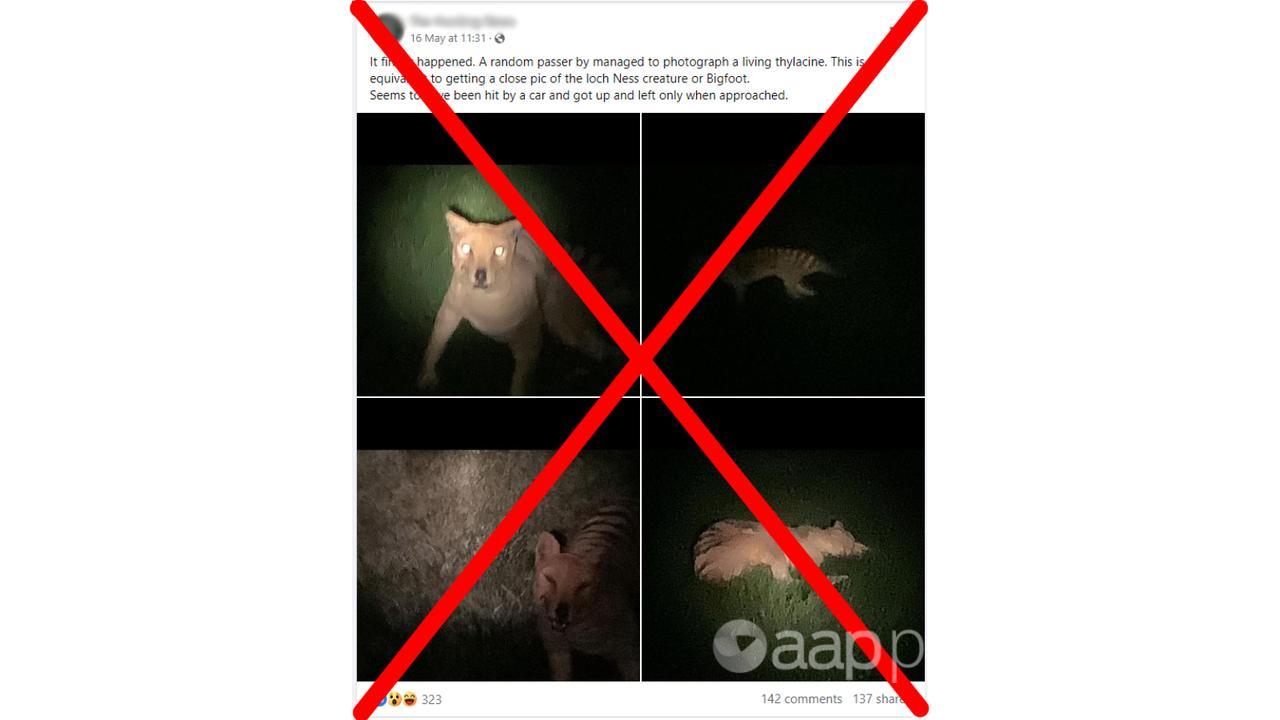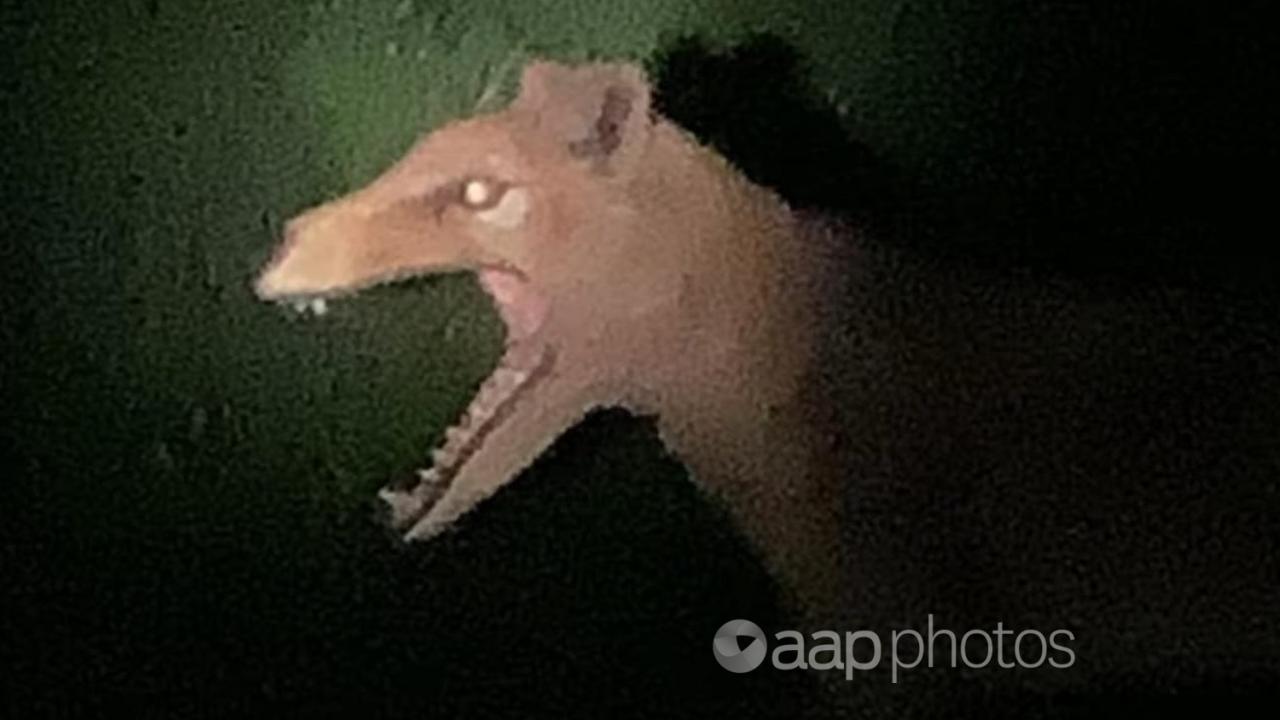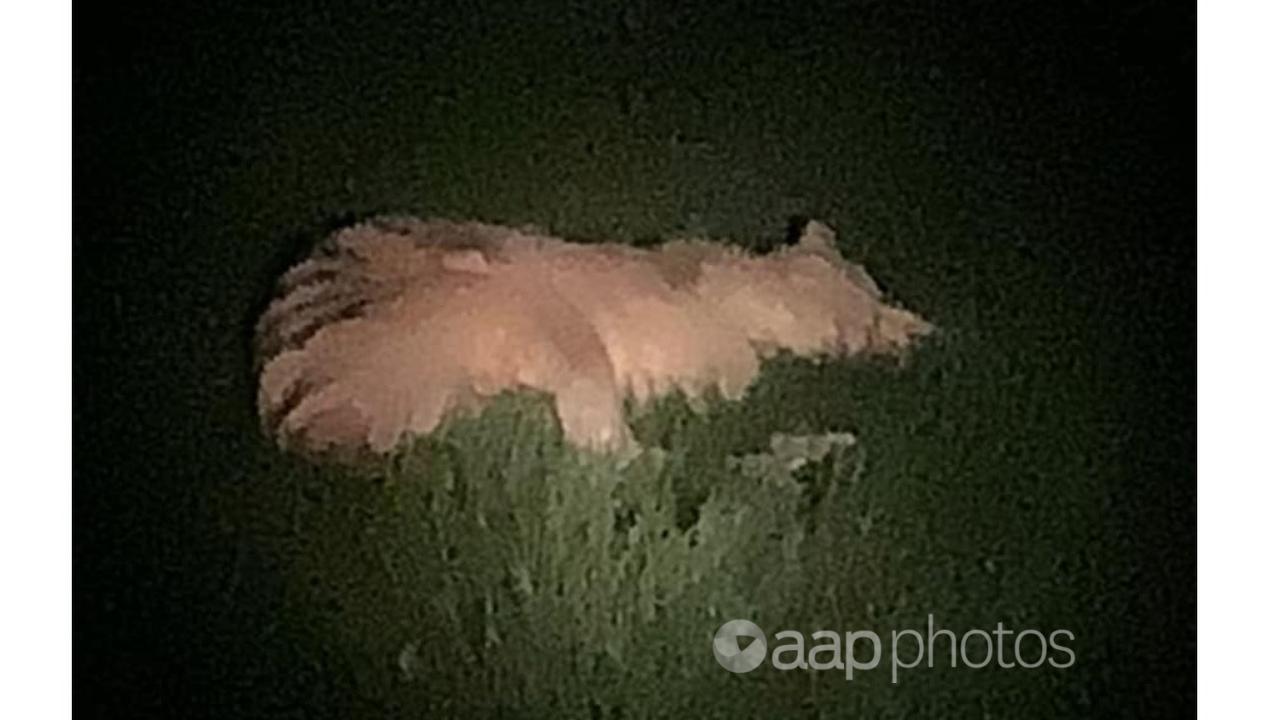AAP FACTCHECK – An American tourist claims to have taken photos of a real Tasmanian tiger while visiting the Australian island state.
This is false. Experts say the images are clearly a hoax due to the animal’s anatomical inconsistencies with Tasmanian tigers, extinct carnivorous marsupials formally known as thylacines.
In a YouTube video interview with US-based wildlife biologist Forrest Galante, the alleged tourist, who uses the pseudonym “Zack” and has his face obscured, claims his supposed thylacine images are authentic.
The images have been shared widely on Facebook, X (formerly Twitter) and Reddit.

The last known thylacine died in captivity in 1936, and the species was officially declared extinct by the International Union for Conservation of Nature in 1982 and the Tasmanian government in 1986 after not being sighted for more than 50 years.
Tasmanian tigers are listed as extinct under Commonwealth law, and presumed to be extinct under Tasmanian law.
The mammals had a distinctive stripe pattern on their hides and hind legs, which were longer than their forelegs.
The alleged photos are blurry or pixelated, but most show a dog-like creature with distinctive stripes on its hide.
In the YouTube interview, Zack says he and his father pulled over their car after seeing an animal lying on the road, believing it to be an injured dog.
University of Tasmania ecologist Professor Barry Brook led a 2023 study on when and where thylacines went extinct.
The research team examined hundreds of sighting claims and concluded the predator likely survived until the 1980s.
However, he tells AAP FactCheck the images in the video “look like badly staged models, not living animals” and are “not worthy of further consideration”.
Professor Michael Archer, from the University of NSW, led a 2013 project to bring the marsupial back from extinction.
He says he’s open-minded and “prepared to be impressed that someone is showing me something credible,” but the pictures are easy to debunk.

Prof Archer pointed out that the jaws of the animal in the images and the jaws of real thylacines are anatomically inconsistent.
“If you tried to imagine where the jaw is and where the articulation process of the lower jaw is, it would be about eight centimetres away from the animal’s skull,” he told AAP FactCheck.
“It’s just ridiculous.”
Prof Archer says the hind leg, seen in one of the pictures showing the creature lying down, is “a joke”.

“It’s a clown foot going forward beyond where it should be, nothing there is credible,” he says.
“Whoever did this really needed to spend a bit of time looking at real animals before they tried to fake this one.”
Biologist and conservationist Nick Mooney, who’s been researching thylacines for decades, pointed out other inconsistencies with the images.
“The photos show an uncanny emphasis on key physical features the public associate with thylacines, to the point of overemphasis,” he told AAP FactCheck.
The former Tasmanian Parks and Wildlife Service officer doubts the tourist’s backstory about the animal noticing the men and making a screech before running away.
“It’s incredibly rare to find an animal apparently moribund roadside then have it quickly recover itself to the point of threat vocalisation and coordination for escape,” Mr Mooney says.
He says that under current conditions, with reduced competition, more food, and increased den sites, “we should have thylacine pouring out of our ears,” so they’re unlikely to be surviving.
The Verdict
The claim a Tasmanian tiger was photographed by a tourist holidaying in Tasmania is false.
Experts say the animal in the images is fake because it has several anatomical inconsistencies with real thylacines and it appears to be a model.
False – The claim is inaccurate.
AAP FactCheck is an accredited member of the International Fact-Checking Network. To keep up with our latest fact checks, follow us on Facebook, Twitter and Instagram.
All information, text and images included on the AAP Websites is for personal use only and may not be re-written, copied, re-sold or re-distributed, framed, linked, shared onto social media or otherwise used whether for compensation of any kind or not, unless you have the prior written permission of AAP. For more information, please refer to our standard terms and conditions.


















